Civil & structural

- Environment & sustainability
- Civil & structural
- Issue 67
An introduction to the 'real world'
Graduates can emerge from university with little face-to-face contact with engineers who have worked in industry. To counter this shortcoming, leading engineers are going back to university as Royal Academy of Engineering Visiting Professors to give undergraduates a frontline view of engineering.
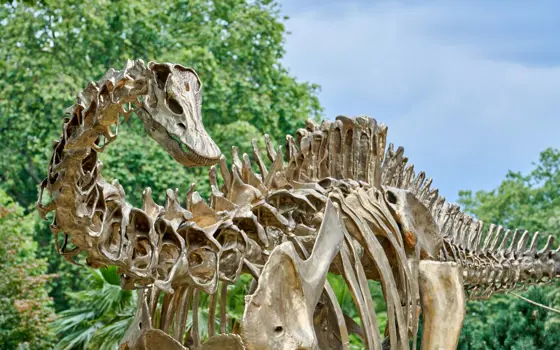
- Design & manufacturing
- Civil & structural
- Issue 101
Bringing prehistory to life
Creating a freestanding bronze replica of the Natural History Museum’s iconic Dippy presented unique engineering challenges, some of which would be solved by looking to nature itself. Leonie Mercedes speaks to the teams involved to find out how they did it.
Quick read

- Environment & sustainability
- Civil & structural
- Innovation Watch
- Issue 101
How punching holes in pavements could prevent flash flooding
Climate change is raising the risk of flash flooding in cities around the world. Could rethinking our impervious roads and pavements stop sewers from becoming overwhelmed?

- Arts & culture
- Civil & structural
- Issue 100
How ABBA Voyage was made
ABBA said they’d never tour again. Bringing them back required a technological marvel, a fully demountable arena, and an array of engineering disciplines working in tandem to make it all come together. Leonie Mercedes goes on a voyage to explore the engineering behind the show.
Quick read

- Civil & structural
- Environment & sustainability
- Opinion
- Issue 100
How can we reimagine building performance?
The built environment – and what we need from it – plays a large role in everybody’s lives. But how do we measure its performance, especially in the face of pressing challenges such as the climate crisis? Here, Fiona Cousins, President of CIBSE (the Chartered Institution of Building Services Engineers), shares the key points from her presidential address looking at how we reframe the idea of building performance.
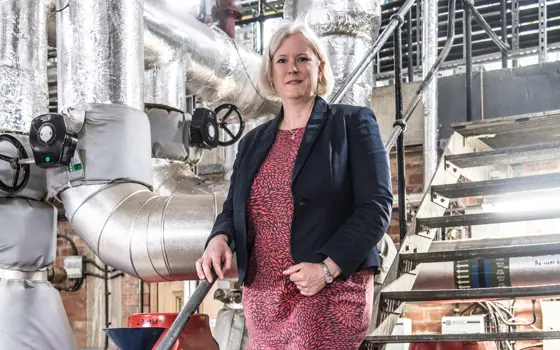
- Civil & structural
- Health & medical
- Profiles
- Issue 99
The expert looking at how air moves around buildings
When COVID-19 hit the planet, medical expertise was everywhere, but when it came to working out how the virus spreads Professor Catherine Noakes OBE FREng was one of a handful of experts in how air moves around in buildings.
Quick read
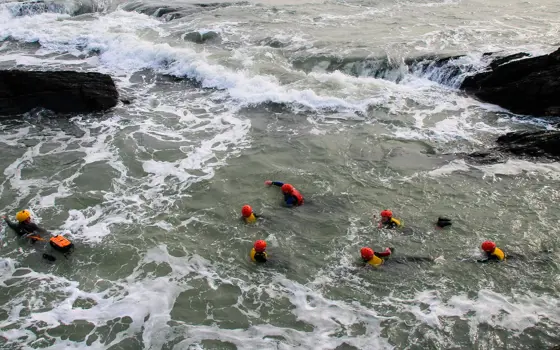
- Civil & structural
- Health & medical
- Opinion
Our wastewater infrastructure must improve to protect public health
News of contaminated waterways increasingly hits the headlines as more people take to the UK’s open water for recreation. Professor David Butler FREng sets out the role that engineering interventions can play in a much-needed upgrade of our wastewater infrastructure.
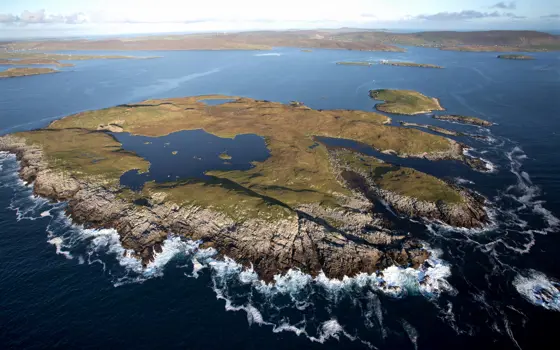
- Civil & structural
- Issue 68
In deep water: The UK's first subsea-to-shore gas plant
Lying 125 kilometres west of the Shetland Islands, the Laggan-Tormore project involved the development of two gas fields and construction of a gas-processing plant and export pipeline in some challenging circumstances requiring innovation for its development.
Quick read

- Civil & structural
- How I got here
Q&A: John Mosuela, civil engineering student
John Mosuela followed his passion for trains to the world of civil engineering. Now, he’s passionate about how engineers can advocate for accessibility and inclusion.
Quick read

- Civil & structural
- How I got here
Q&A: Fiona Walport, structural engineering researcher
UK Young Academy member and recent RAEng Engineers Trust Young Engineer of the Year winner Fiona Walport is inspired by how structural engineers can shape a better future.
Quick read

- Civil & structural
- Environment & sustainability
- Opinion
- Issue 95
Building a greener future
Will Arnold, Head of Climate Action at the IStructE, says we need a total rethink of how we create, maintain and power our buildings to better protect our planet.
Quick read

- Civil & structural
- How I got here
- Issue 96
Q&A: Nyasha Mutembwa, civil engineering student
A summer school in Shanghai inspired civil engineering student Nyasha Mutembwa to reach for every opportunity on offer.

- Civil & structural
- Mechanical
- Issue 96
Bridging the Eurasian gap
The world’s longest suspension bridge (for now) spans about 5 km. Just how did they build it, and what was the secret to it being a year ahead of schedule?

- Civil & structural
- Maritime & naval
- Issue 96
Ensuring engineering’s endurance
Offshore lighthouses are constantly getting battered by waves and wind. Rather than replacing them, engineers are looking into clever ways to prolong these (and other) structures.

- Environment & sustainability
- Civil & structural
- Issue 96
Protecting the UK’s coasts
Settlements on the UK’s coastlines are increasingly at risk of being lost to erosion. How can different engineering approaches protect them?

- Civil & structural
- Environment & sustainability
- Issue 95
Building with fungi
Materials made from mycelium, the hair-like threads that sustain all fungi, are now finding uses in construction.
Quick read

- Civil & structural
Why dyslexia and structural engineering fit together
As a structural engineer, your ideas can change the world. If you’re someone with dyslexia, your vision could be even greater.

- Civil & structural
- Technology & robotics
- Software & computer science
- Issue 94
3D printing a bridge with a twin
Virtual models of structures could help engineers use less material and save CO2 emissions in future construction projects – like with this 3D-printed bridge in Amsterdam.
Quick read

- Civil & structural
- Electricals & electronics
- Innovation Watch
The sensors making cities and structures smarter
UtterBerry’s matchbox-sized sensors form a network, akin to the human body’s sensory system, that provides early warning when maintenance might be needed or damage repaired.
Quick read

- Civil & structural
- Health & medical
- Innovation Watch
The startup purifying water in partnership with low-income communities
Access to clean water is a fundamental human need, yet hundreds of millions worldwide go without it. Cambridge-based social enterprise Blue Tap has one solution – a low-cost device that purifies water by precisely injecting chlorine into a local water supply.

- Civil & structural
- Transport
- Issue 92
The ‘flat-pack’ footbridge for train stations
If you thought flat-pack was just for furniture, think again! Find out how this new concept can make building a humble railway bridge take less time, money and carbon.
Quick read

- Environment & sustainability
- Civil & structural
- Opinion
- Issue 92
How do we make the UK more resilient to flooding?
Extreme flooding is becoming a regular occurrence across the UK, with flash floods causing significant damage to homes and businesses.

- Civil & structural
- Environment & sustainability
- Issue 91
Engineering biodiversity
If engineers planning, designing or implementing new infrastructure works are not familiar with natural capital and biodiversity net gain, they will have to learn fast. Under the Environment Act, new developments are required to demonstrate ‘biodiversity net gain’, requiring important changes to the way engineers work.
Quick read

- Civil & structural
- Health & medical
- Opinion
- Issue 90
Better buildings need a breath of fresh air
Post-COVID-19, how do we stay safe in winter without throwing open all the windows and cranking up the radiators to max?

- Civil & structural
- Issue 89
The sound before the slide
Detecting the early warning signs of a landslip by listening for sounds generated within a body of earth at risk of such movement might seem an unlikely proposition, but engineers at Loughborough University have developed an instrument to do just this.
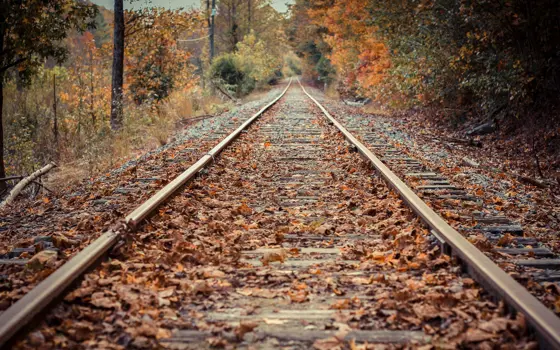
- Civil & structural
- Issue 87
Leaves on the line
Slippery layers of wet leaves on railway lines have been causing train delays for years, and numerous attempts have been made to solve the issue. Geoff Watts spoke to the engineers working on innovative solutions to the longstanding problem.
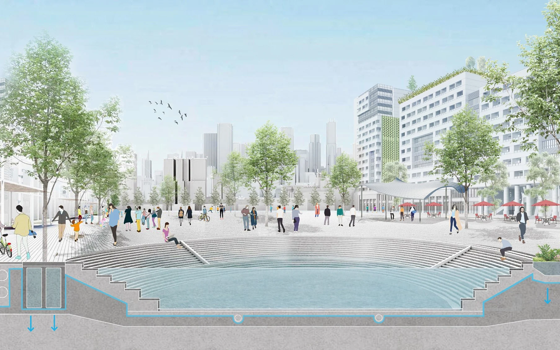
- Civil & structural
- Environment & sustainability
- Opinion
- Issue 87
Rethinking the future through design
Dr Mark Fletcher FREng, Global Water Business Leader at Arup, argues that engineers need to rethink design and embrace systems thinking now more than ever, to accelerate regenerative outcomes for people, places and the planet.
Quick read
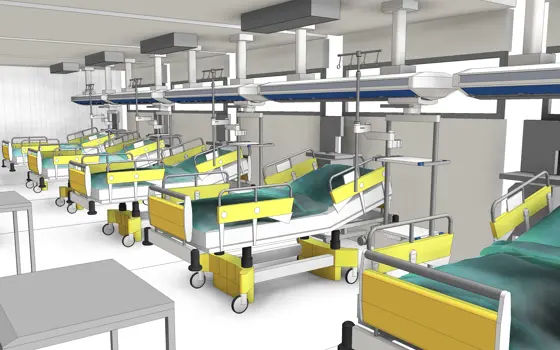
- Civil & structural
- How I got here
- Issue 85
Q&A: Eoin O'Loughlin & Philip Turner
Eoin O’Loughlin is a fire safety engineer at Arup. Philip Turner is a mechanical building services engineer at Arup. Together they have been working on CareBox, a series of design guidelines for scalable, modular and rapid solutions to provide additional intensive care and ward beds for COVID-19 patients.

- Civil & structural
- Profiles
- Issue 84
Teams that count
Dervilla Mitchell CBE FREng has created engineer and architect teams to work on major projects. The recipient of the 2020 Royal Academy of Engineering President’s Medal- Mitchell has used her engineering skills to help keep Arup’s firm running during COVID-19 and also to chair a decarbonisation project for the National Engineering Policy Centre.
Quick read

- Civil & structural
- How I got here
- Issue 83
Q&A: Rosie Goldrick
Rosie Goldrick is Engineering Director at MASS Design Group, a non-profit design collective that builds and designs innovative projects throughout East Africa, with a focus on education, health and justice.
Quick read

- Design & manufacturing
- Civil & structural
- Innovation Watch
- Issue 83
Another brick in the wall
With natural resources running low, Scottish engineers have created a brick that uses more than 90% recycled building materials.

- Civil & structural
- Issue 81
Cladding Crossrail's tunnels
The new tunnels built for London’s huge Crossrail development were coated with a sprayed concrete lining. This resulted in a rough and variable fixing surface that needed an innovative engineering solution to fit the cladding system to the inconsistently-shaped tunnel interiors.

- Civil & structural
- Issue 81
Completing the Sagrada Família
Antoni Gaudí’s masterpiece, the Sagrada Família church in Barcelona, has been under construction for nearly 140 years and is due to be completed by 2026, the centenary of Gaudí’s death. Tristram Carfrae RDI FREng, deputy chairman of Arup, explained to Hugh Ferguson how this is being achieved without compromising Gaudí’s vision or quality standards.

- Civil & structural
- Issue 80
Failed development to efficient office skyscraper
22 Bishopsgate is the tallest building in the City of London and the second tallest in western Europe. However, the most extraordinary feature of this new skyscraper is the ingenious structural engineering that has enabled the remains of an earlier, failed development to be transformed into a large efficient modern office block.
Quick read

- Civil & structural
- How I got here
- Issue 80
Q&A: Natalie Cheung
Natalie Cheung is a STEM Ambassador Coordinator in London. She recruits and trains volunteer engineers to engage with young people through hands-on activities, careers events and mentoring. Natalie was a STEM Ambassador herself while working as a railway civil engineer.

- Civil & structural
- Environment & sustainability
- Profiles
- Issue 80
Structures for a sustainable society
The growth of megacities and factors such as climate change have changed the nature of the challenges engineers face. Jo da Silva OBE FREng warns of the growing need to consider the resilience of the infrastructure that sustains cities and their inhabitants.

- Civil & structural
- Issue 77
Going underground underneath London’s Claridge’s hotel
Engineers are completing a new five-storey basement underneath London’s Claridge’s, with no interruption to the hotel overhead. This extraordinary achievement has been made possible by traditional mining techniques and state-of-the-art structural and geotechnical engineering.

- Civil & structural
- Sports & leisure
- Issue 77
Tottenham Hotspur Stadium: The football pitch in three pieces
Tottenham Hotspur Stadium is part of a regeneration project that has transformed the stadium and surrounding area. As well as being home to Tottenham Hotspur Football Club, the stadium will host NFL games in the UK and it boasts the world’s first dividing sliding pitch.

- Civil & structural
- Issue 76
Tunnelling over time
The 2018 Sir Frank Whittle Medal winner for ‘outstanding and sustained achievement in any engineering discipline’ is veteran tunnelling engineer John Bartlett CBE FREng. His greatest and unappreciated achievement was the bentonite tunnelling machine, the precursor of all the world’s tunnel boring machines for non-cohesive soils.

- Civil & structural
- Profiles
- Issue 75
Foundations for a construction revolution
For a young Dr Sarah Williamson FREng, summer holidays were spent on her father’s building sites. Today, she leads a team of engineers at one of the UK’s largest construction sites and is pioneering the implementation of ‘digital engineering’ in construction.

- Civil & structural
- Issue 74
A tower with a twist
Building a conventional 26-storey building is pretty straightforward. Twist it 30 degrees in a gentle spiral and a host of engineering challenges are created, from countering the huge torsional stresses to finding a way to clean the windows. Modern computer systems helped to quickly produce solutions.
Quick read

- Civil & structural
- How I got here
- Issue 74
Q&A: Elliott Webb
Elliott Webb is an apprentice engineer in Arup’s Highways team. He is currently designing and modelling routes for the High Speed 2 (HS2) project.

- Civil & structural
- Opinion
- Issue 74
Collaboration is key to improving the UK's productivity
Britain’s construction sector is experiencing its lowest levels of productivity in more than 40 years. Sir John Armitt CBE FREng, Chair of the National Infrastructure Commission, believes that better collaboration could drastically improve UK productivity.

- Civil & structural
- Issue 73
Copenhagen's 'kissing' bridge
An innovative sliding bridge opened to the public in Copenhagen in the summer of 2016. Although the project faced various challenges and delays, the Inner Harbour Bridge (Inderhavnsbroen) has reduced commuting time for thousands of pedestrians and cyclists in the Danish capital each day.

- Civil & structural
- Issue 73
The sky's the limit
Tall buildings are rising in cities all over the world, at a rate and with a variety never seen before. Skyscraper designer and London-based structural engineer Kamran Moazami, talks about one of New York’s most recent skyscrapers – 432 Park Avenue – and the engineering challenges of designing tall buildings.
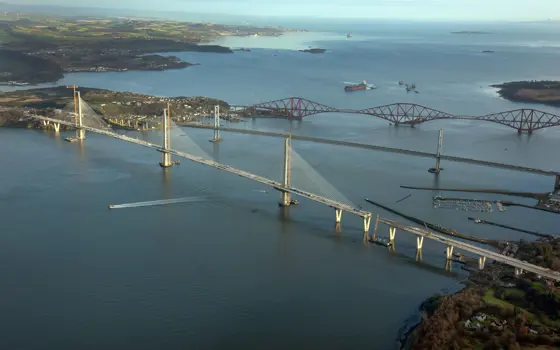
- Civil & structural
- Issue 71
World record-breaking bridge
The Queensferry Crossing, Britain’s first major new bridge for a generation, is the world’s longest three-towered cable-stayed bridge, Britain’s tallest bridge, and Scotland’s largest construction project this century. The three engineers most closely involved in the project speak about its construction.

- Civil & structural
- Arts & culture
- Issue 70
Design-led innovation and sustainability
The Stavros Niarchos Foundation Cultural Center, the new home of the Greek National Opera and the Greek National Library, boasts an innovative, slender canopy that is the largest and most highly engineered ferrocement structure in the world.

- Civil & structural
- Issue 69
Built on principles: White Collar Factory
In the White Collar Factory building in ‘Tech City’ on the fringes of the City of London, engineering is changing the design of the modern urban office. Michael Stych from Arup and Rob Partridge from AKT II uncover the thinking behind this transformation.

- Civil & structural
- Issue 69
Modular construction of nuclear power stations
Small modular reactors (SMRs) are attracting global interest. Laing O’Rourke engineers describe a research project that tested modular and manufacturable designs for nuclear civil engineering construction that could be quicker and cheaper to build than the current generation.

- Civil & structural
- Issue 67
Francis Crick Institute, London
The Francis Crick Institute, due to open in central London later this year, will be a world-leading centre for biomedical research and innovation. Discover how the unique challenges of designing and constructing this large and unusual building were overcome.

- Civil & structural
- Issue 66
Securing water supplies with sand dams
Short intense rainfall is a defining characteristic of dry lands and extended droughts are typical. For some regions, capturing the rain using sand dams is providing communities with year-round supplies of water. Simon Maddrell talks about the principles and success of sand dams.

- Civil & structural
- Issue 65
Fulton Center, NYC
A $1.4 billion project that created a new transit hub and improved links to six subway stations in Lower Manhattan was completed last year. Craig Covil, Principal of Arup and New York Project Director explained the main challenges and how they were overcome.

- Civil & structural
- Environment & sustainability
- Opinion
- Issue 65
Upgrade existing buildings to reduce emissions
Much of the UK’s existing buildings predate modern energy standards. Patrick Bellew of Atelier Ten, a company that pioneered environmental innovations, suggests that a National Infrastructure Project is needed to tackle waste and inefficiency.

- Civil & structural
- How does that work?
- Issue 63
Tunnel boring navigation
With no surface reference points, underground surveying requires specialised skills in order to gain trustworthy accuracy for the surveying team. Find out what techniques are used to measure distance, maintain position and cope with curved alignments in tunnels.
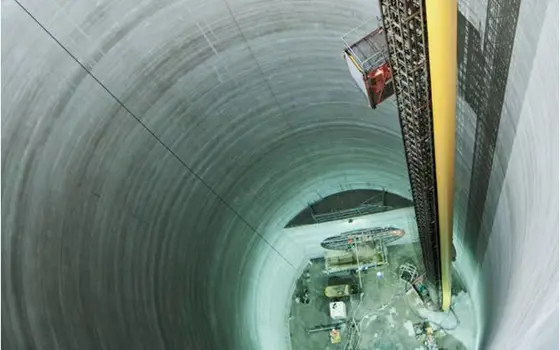
- Civil & structural
- Issue 63
London's deepest tunnel and shafts
The Lee Tunnel – the UK water industry’s largest project since its privatisation in 1989 – is the deepest tunnel ever built in London. Richard Sutherden, design manager, describes the challenges and solutions for the venture.

- Civil & structural
- Profiles
- Issue 62
Creating user-friendly buildings
For Michelle McDowell, a former Business Woman of the Year, a passion for joined-up design thinking and building information modelling with a user-friendly approach has enabled her to pioneer revolutionary changes in her field.

- Civil & structural
- Issue 62
Troja Bridge
In November 2014, one of the world’s largest network arch bridges was officially opened in Prague. The UK may soon have its first network arch bridge if the go-ahead is given for a new rail project in Manchester.

- Civil & structural
- Innovation Watch
- Issue 61
The return of arched bridges
Arch bridges are strong, durable and require little maintenance. However, very few had been built since the early 1900s until the FlexiArch was developed and launched in 2007. Now, there has been a minor renaissance for this ancient form of construction.
Quick read

- Civil & structural
- Issue 52
Building the Shard
The Shard is one of London's most iconic buildings. The tallest in Western Europe, it was designed by Italian architect Renzo Piano and dominates the city’s skyline. Ingenia spoke to John Parker, project director for structural engineers WSP, who outlined the engineering decisions made in building the enormous steel and glass structure.